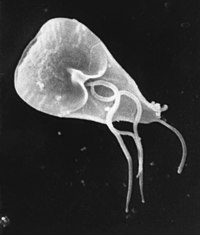
Seroprevalence and risk factors of Coxiella burnetii infection in cattle in northeast Algeria
Sign Up to like & getrecommendations! Published in 2019 at "Tropical Animal Health and Production"
DOI: 10.1007/s11250-019-02083-x
Abstract: A cross-sectional study was conducted to determine the seroprevalence and the risk factors associated with C. burnetii infection in cattle in the state of Setif in northeastern Algeria from March 2016 to April 2018. A… read more here.
Keywords: infection cattle; risk; risk factors; seroprevalence risk ... See more keywords

A field evaluation of an isothermal DNA amplification assay for the detection of Theileria annulata infection in cattle.
Sign Up to like & getrecommendations! Published in 2017 at "Molecular and cellular probes"
DOI: 10.1016/j.mcp.2016.12.006
Abstract: A loop-mediated isothermal amplification (LAMP) assay was evaluated for the detection of Theileria annulata infection in cattle. The results were compared with a real-time PCR used for the quantification of T. annulata parasitaemia. One hundred bovine… read more here.
Keywords: infection cattle; theileria annulata; annulata infection; detection theileria ... See more keywords

Simultaneous infection of cattle with different Anaplasma phagocytophilum variants.
Sign Up to like & getrecommendations! Published in 2019 at "Ticks and tick-borne diseases"
DOI: 10.1016/j.ttbdis.2019.05.011
Abstract: Anaplasma phagocytophilum is a tick-transmitted Gram-negative obligate intracellular bacterium that replicates in neutrophil granulocytes. It causes tick-borne fever in cattle and sheep. We report here the case of a 5-year-old cow from Germany with clinically… read more here.
Keywords: infection cattle; anaplasma phagocytophilum; anka; simultaneous infection ... See more keywords

Endemic infection of cattle with multiple genotypes of Theileria orientalis on the Northern Tablelands of New South Wales despite limited presence of ticks.
Sign Up to like & getrecommendations! Published in 2020 at "Ticks and tick-borne diseases"
DOI: 10.1016/j.ttbdis.2020.101645
Abstract: Bovine theileriosis, caused by the Theileria orientalis complex, causes a mild persistent infection with the severity dependent on the infecting genotype and host exposure status. Clinical theileriosis was first detected on the Northern Tablelands of… read more here.
Keywords: infection cattle; high prevalence; infection; prevalence ... See more keywords

Inferred Causal Mechanisms of Persistent FMDV Infection in Cattle from Differential Gene Expression in the Nasopharyngeal Mucosa
Sign Up to like & getrecommendations! Published in 2022 at "Pathogens"
DOI: 10.3390/pathogens11080822
Abstract: Foot-and-mouth disease virus (FMDV) can persistently infect pharyngeal epithelia in ruminants but not in pigs. Our previous studies demonstrated that persistent FMDV infection in cattle was associated with under-expression of several chemokines that recruit immune… read more here.
Keywords: infection cattle; persistent fmdv; infection; expression ... See more keywords